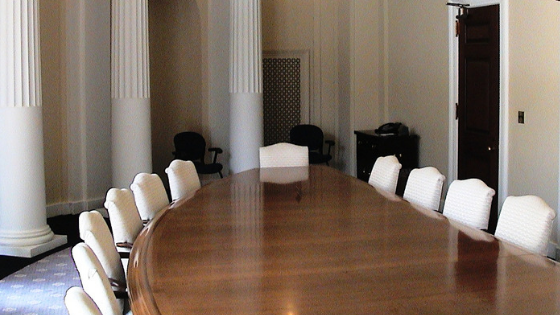When a court is short on space, alternative dispute resolution (often called ADR) can be a viable option for addressing space constraints. In this post, I will discuss a particularly effective example where ADR has been successfully used to avoid the need for expansion of courtroom space while providing a valuable and efficient dispute resolution service and something to consider during the courthouse planning process.
Over the past year, I published several articles and an eBook devoted to the challenge of space constraints limiting the ability of a court to increase its courtroom capacity in response to an increase in caseload. Most recently, in the articles on Courtroom Sharing and Videoconference Hearing Rooms, I explained how these practices could be used as alternative solutions for enhancing a court’s operational efficiency and avoiding the need to construct another full-size courtroom.
The use of courtroom sharing and videoconference hearing rooms are both excellent solutions to courtroom space constraints, but ADR presents another space-saving solution, as I found in a courthouse that I recently toured in the Midwest.
During the previous five-year period, population and economic growth fueled a commensurate growth in caseload in this relatively large court jurisdiction. The court recognized that an expansion of courtrooms was neither practical nor desirable in its well-maintained and generally functional historic courthouse. Instead, in response to the rapid growth, the court elected to emphasize the active use of ADR for all its civil cases.
Implementing ADR
The court approached this transition from both a policy and a facility perspective. First, the court made it mandatory to use ADR negotiations, conducted by one of the jurisdiction’s judges, prior to any civil case being heard before a jury in a courtroom. Second, the court converted several underutilized file rooms to an ADR suite. The suite was complete with a lobby, two conference rooms (conf. on plan below), two breakout rooms (B/O on plan below), bathrooms, and two small coffee counters. Additionally, the suite was located near the judges’ chambers area to allow a judge the ability to move back and forth between chambers and the ADR suite to conduct multiple negotiations at the same time.
The chief judge was justifiably proud of the high volume caseload that was being efficiently processed by a limited number of judges – and the accomplishment was even more impressive because they were using a limited number of shared courtrooms.
Like the use of courtroom sharing and videoconference hearings, the use of ADR requires a court to alter its procedures as well as its facilities. This requires both initial buy-in and continued cooperation between the judges and the clerk’s office. As I observed in this Midwestern court, when ADR works, it works very well.






.jpg)
.jpg)
.jpg)
.jpg)
.jpg)
.jpg)


-1.jpg)
.jpg)
.jpg)

